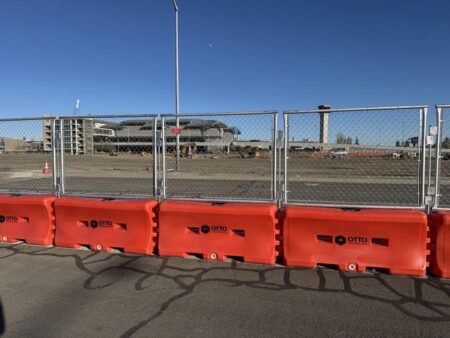The Spanish Directorate General of Traffic (DGT) has put into operation an innovative Automatic Danger Warning System at conflictive road crossings, which aims to reduce accident rates, optimize energy consumption, and increase safety at dangerous intersections.
The groundbreaking system was designed by the Spanish company SICE (Sociedad Ibérica de Construcciones Eléctricas) and warns drivers using a main route in real time about other vehicles in a crossroads. Drivers get advance warning, so they have time to adapt their speed to road conditions and are aware of possible maneuvers from other vehicles.
The system is highly configurable and able to meet the requirements of each location, as well as connecting with C-ITS (collaborative mobility systems). The pioneering ‘smart crossing’ system is already successfully operating in five locations, specially targeted for their hazardous nature and high vehicle volumes.
The crossings, located in Madrid, Navarra, León, La Coruña, and Asturias, have similar features that make them particularly problematic due to poor visibility. The pilot crossings are located on curves, or slope changes, so they are prone to suffer from bad weather conditions, such as rain, fog and snow. Based on an ‘intelligent’ algorithm that can detect a vehicle’s presence at different points in the crossing, the system turns on a solar-powered light signal that warns drivers on the main road about vehicles on secondary access roads. The text ‘vehicle in crossings’ that appears on the signal, encourages the driver to drive with caution, in order to avoid potential collisions.
When a vehicle is close to the crossing, the sensor installed under the pavement sends information to an ERU (Universal Remote Station) in the form of an industrialized computer installed at the crossing that remotely manages the whole system, and controls the electronic signage.
In the case of the Sesmonde’s crossing (A Coruña), in addition to the signals, the driver is also warned through the I2V (infrastructure-to-vehicle) communications technology. Vehicles on the main road equipped with an onboard unit (OBU) will get an acoustic signal advising of vehicle presence on secondary roads. This improvement exponentially increases the system’s efficiency and performance, as well as enhancing road safety.
Information and alerts gathered by the intelligent signaling system are collected in real time at the appropriate traffic control center. This enables remote and centralized tracking about the operational efficiency of the system, and provides historical data records and key performance indicators (KPIs).




